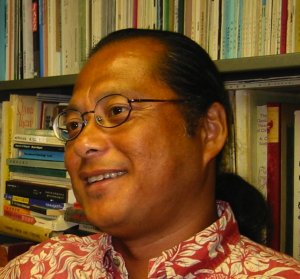Presented By: Confucius Institute at the University of Michigan
The Amazing Molihua: Culture and Meaning of China’s Most Well-known Folksong
Presented by Frederick Lau, Ethnomusicologist and Professor, University of Hawai’i

Internationally known as “Jasmine,” the song molihua was an East-China folksong of humble beginning. Like many regional folksongs in China whose origins were mostly unknown, molihua exists throughout the region in numerous versions. The molihua that most people know today was collected and documented by British diplomats George MaCartney and John Barrow presented in his book Travel in China in late 18th century. Puccini’s incorporation of it in his opera Turandot in 1924, further consolidated the tune’s global reputation. Since then, molihua has emerged as the most well-known Chinese musical and cultural icon at home and abroad. This presentation traces the brief history of molihua and describes the different ways that it was being utilized. Dr. Lau argues hat the shifting meaning of molihua is predicated on what molihua represents against the ever-changing economic and political context of China since the new millennium.
Frederick Lau is an ethnomusicologist, flutist, and conductor whose scholarly interests include a broad range of topics in Chinese, Western, and Asian music and cultures. He is author of Music in China (Oxford 2008) and co-editor of Making Waves: Traveling Musics in Asia and the Pacific (Uiversity of Hawaii Press, forthcoming), Vocal Music and Cultural Identity in Contemporary Music: Unlimited Voices in East Asia and the West (Routledge 2013), Locating East Asia in Western Art Music (Wesleyan 2004). Lau is editor of the book series entitled Music and Performing Arts of Asia and the Pacific, University of Hawaii Press. Currently, he is the chair and professor of Ethnomusicology and director of the Center for Chinese Studies at the University of Hawaiʻi at Mānoa.
Frederick Lau is an ethnomusicologist, flutist, and conductor whose scholarly interests include a broad range of topics in Chinese, Western, and Asian music and cultures. He is author of Music in China (Oxford 2008) and co-editor of Making Waves: Traveling Musics in Asia and the Pacific (Uiversity of Hawaii Press, forthcoming), Vocal Music and Cultural Identity in Contemporary Music: Unlimited Voices in East Asia and the West (Routledge 2013), Locating East Asia in Western Art Music (Wesleyan 2004). Lau is editor of the book series entitled Music and Performing Arts of Asia and the Pacific, University of Hawaii Press. Currently, he is the chair and professor of Ethnomusicology and director of the Center for Chinese Studies at the University of Hawaiʻi at Mānoa.